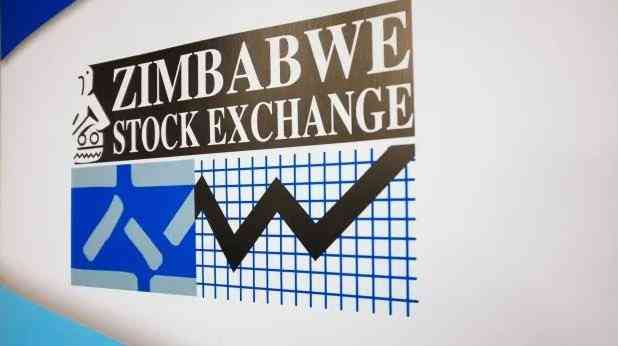
IT was yet again, an interesting week on the auction market this holiday-shortened week.
The overall levels of demand shot up by 98% from last week, the biggest jump since the revamp of the auction market in June 2020.
This week’s jump in demand is even higher than the May 2022 jump, which came in at 88%, just as the rate depreciated by 33% in that respective season.
That week, government announced a raft of both fiscal and monetary policy measures to cushion a Zimbabwe dollar (Zimdollar) freefall, which again risked pushing the unit into extinction.
One of measures was a fine-tuning of the auction market, targeted at enhancing its price discovery. The Reserve Bank of Zimbabwe (RBZ) increased tradeable amounts on the WBWS and allowable inter session margins.
This week, the outcome of the auction market suggested further liberalisation, which some have suggested to be full liberalisation of the market into a pure Dutch Auction System.
Out of the US$60 million demanded, only 23% was matched, a decline from last week’s 48%. Before last week, the auction market had averaged 86% in terms of bids fulfilment rate, from the beginning of the year.
As we highlighted last week, the disproportionate increase in demand relative to supply, exposes market weaknesses. The gaps seen through the variance between the auction rate and the parallel rate, creates excessive arbitrage, which only goes up with the increase in the premium.
- Chamisa party defiant after ban
- Gwanda accident victim seeks justice
- Village Rhapsody: How Zimbabwe can improve governance
- Zimbabwe fall in T20 opener
Keep Reading
The parallel market rate is sitting at near 100% levels, its highest in one year. These levels of demand also reflect on tightening local peer settlements in USD, a value preservation tactic in volatile periods typically those characterised by hyperinflation.
It also reflects on a slowdown in general commerce since the explosion of the Zimdollar,about a month ago. In these disruptive chapters, significant local liquidity is created through speculative moves, largely executed through capital markets.
Even so, borrowings for similar activities spike, resulting in massive credit creation with multiplier effects. The overwhelming pressure coming from these activities, counteract effectively the ineffective mop up barriers, such as gold coins.
The RBZ has gone into overdrive, promoting gold coins and the new digital currency in efforts meant to divert pressure from the United States dollar (USD). In the second digital gold token issue, the central bank announced that it received 106 applications, valued at ZW$8,06 billion allotted in total.
These are all attempts to reconfigure the Zimdollar. While these results may be satisfactory, they are devoid of clearly demonstrating induced appetite for the token against that of primary choice.
When looked at from the angle of USD demand against ZWL demand, the results are more telling.
The ZWL demand is grossly high, showing that demand from ZWL is simply a rejection of currency while that of the greenback is merely investments potentially aiming for a superior USD return.
The fact that only US$2 000 was expended towards the asset class shows a lack of appeal on those holding real money. All things being equal there is no way of convincing self that the RBZ has sufficient gold to back any currency digital or otherwise.
The bank has only about 230 grammes a month to mint gold coins. This is deduced from the fact that the Bank pays about 25-30% to primary producers in local currency.
So far, given the first and second issue, 210 grammes have presumably been committed to underwriting the issues, leaving out only 20 grammes for issues within two weeks.
This shows that the central bank cannot sustain the digital currency scheme without defaulting on citizens once again.
It is elementary economics and largely common knowledge that market fractures create arbitrage opportunities and so part of the surge in demand of forex experienced on the auction market is reflective of speculative endeavours.
Rationale agents are seeking to exploit the gap between the auction market and the parallel market. Some, who are not even speculators, are using the opportunity to narrow down losses incurred for using a suboptimal rate at their respective outlets.
What is quite apparent from all these observations is that the situation is heightening, with the increased pace of depreciation of the local currency. The longer it takes for authorities to decisively deal with the situation, the harder it becomes to solve.
In essence, if authorities do not submit effective stop-gap or sustainable measures in time, chances of a Zimdollar crash spontaneously increase.
Where to from here?
Across the business from, particularly the consumer facing retail, prices are now largely pegged in inflated USD. For most of the products, the USD price is at least twice the normal price.
This is an inverse stance to the exchange rate. The 100% USD price adjustment is a tacit response to counter the impact of value loss in ZWL.
For retailers opting to pay in ZWL, they will have to pay fair value since the price will be USD (100% adjusted) multiplied by the official exchange rate (50% lower than market).
In essence what the retail market is communicating is that the core stance is to defend value and forgo sales expansion, given the volatility.
To achieve this, we inflate the USD price, effectively pushing out USD paying buyers but maintain stock and get equivalent value from those seeking to dump or expend ZWL. This would help comply with legislation, preserve stock and value of sales.
As always government’s response has been unmeasured. The duty exemption on basic commodities is a salient response to local producers and retailers that their strategy on price adjustment is unacceptable.
Allowing citizens to import duty free deprives the fiscus both in terms of corporate tax and duty. Further, it dampens local industry growth with ripple economic-wide adverse effects.
The economy becomes the biggest loser.
Gwenzi is a financial analyst and MD of Equity Axis, a financial media firm offering business intelligence, economic and equity research. — [email protected].











